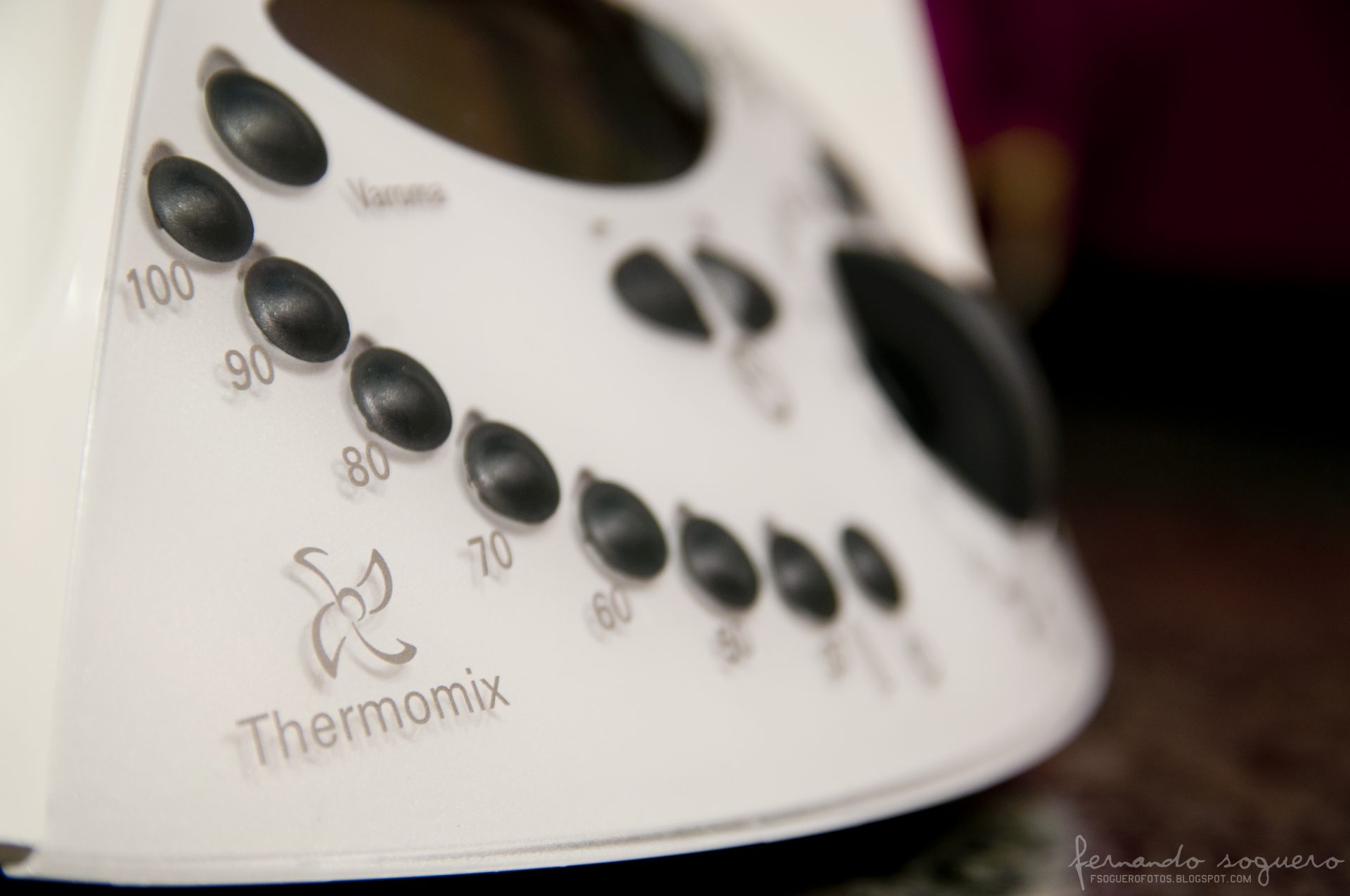by Lauren Wilson for Viva Tastings, a ‘Certified Good Food Fighter‘
It may have been during the North American media buzz of late 2005/early 2006 that you first heard of the Thermomix, when food writers like Amanda Hesser, or here in our own backyard Jacob Richler, were all a twitter about this wunderkind of the kitchen – a single unit that will banish your Cuisinart, KitchenAid, steamer, blender, scale, and grinder, on top of giving you an additional burner for sautéing or simmering (and stirring for you while it’s at it).
Many of the world’s most celebrated chefs have a Thermomix (or two, or three) in their kitchens: Rene Redzepi, Ferran Adria (formerly at elBulli), Thomas Keller, and David Chang are among just a few of the heavy hitters who use them. Here in Canada its been reported that Jason Bangerter of Auberge du Pommier, Martin Picard of Au Pied de Cochon, Michael Stadtländer of Eigensinn Farm and Claudio Aprile of Colborne Lane and Origin are using them, too.
But the REAL market for Thermomix is the home cook in Europe, where over 500,000 units are sold every year and where the machines are affectionately called Bimby or Thermi. Even the pastry chef at the White House has got one of these babies, um, I mean Bimbies.
With a hefty price tag of $1,600, the Thermomix quickly came to be seen as the epitome of hedonistic foodie excess and elitism. Just another expensive gadget that automates work and destroys the personal connection to food, critics say. Add to that the cultish vibe surrounding acquiring one – they are not even available in the U.S. and here in Canada you can’t just drop in to your favourite kitchen supply store to check one out, customers can only test and purchase the machine at hosted demonstrations (a la Tupperware parties of yore) – and soon Thermomix owners felt compelled to openly defend their choice to buy one.
Criticism aside, in actuality it’s a pretty amazing machine. They do make life a lot easier for home cooks, and can pump out some pretty innovative and unique creations for professional chefs. In the age of the world wide web, a large and very enthusiastic community has developed around their Bimbies – sharing tips, tricks, videos, recipes. Vorwerk, the German company that makes the Thermomix, has even released iPad and iPhone apps for the machine.
Here at Viva we use the Thermomix to its full potential, running the gamut from cooking silky smooth soups that never need straining, to grinding the finest of powders (bacon powder!) and flours (wild rice! farro!), making perfect emulsions, and because of its precise temperature controls and even heat it’s a dream for tempering chocolate or making custards with no need to stand over the stove.
Below we’ve included a recipe for Viva’s Figgy Salami – all made in the Thermomix. It’s a wonderful blend of dried figs and other fruits, nuts and ginger that would make a perfect accoutrement for your next cheese plate. It can also be easily adapted to be made without a Thermi by using a food processor instead, but why not join us next Tuesday, January 24th, to see this kitchen power tool in action at our upcoming Thermomix cooking class?
Or, if you have a Thermomix, this hands-on class will show how to optimize its power from piping hot soups to frozen desserts. You will create an entire meal utilizing the Thermomix for every dish, then sit back and enjoy the fruit of the Bimbi’s labour with a glass of wine. Check out our website for more details and to register.
—
Viva’s Figgy Salami
Makes 4 12cm x 5cm logs
Ingredients:
500 grams moist dried figs, stem removed & quartered
100 grams chopped pitted dates
40 grams chopped dried cranberries
30 grams chopped crystallised ginger
35 grams slivered almonds
35 grams chopped unsalted pistachio nuts
70 grams roasted pine nuts
1 teaspoon pure vanilla extract
1 1/2 teaspoons Chai spice
2 tablespoons brandy or cognac
1 cup icing sugar, or enough to coat the ‘salami’
Method:
Add all ingredients and mix for 2 to 3 minutes on speed 6 until the mixture is well combined and resembles a thick jam. If the mixture seems too dry or stiff, add a bit more brandy and mix again. (NB: This recipe can be adapted to use a food processor instead of the Thermomix. Pulse all ingredients in the processor until thick jam-like consistency is reached.) Divide the mixture into 4 equal portions and roll into logs resembling a salami (it should be quite sticky). They should be about 12cm long and 5cm thick. Cover these with seran wrap and leave to rest for about an hour. Sift some icing sugar on a cutting board or other surface and roll the salami in the sugar. They will look like a well aged salami. Put these aside wrapped first in parchment paper and then in seran in a cool dry place and let cure for two weeks. Roll again in another coating of icing sugar before serving. Serve on a board with some hard cheese. Guests can cut the salami into slices and add a piece of cheese. The perfect gluten free cracker!
—
Lauren Wilson is a jack-of-all-food-trades. After cooking with Karen and Anne at Viva Tastings and eating up all the good bits of Toronto, she followed a trail of crumbs to Brooklyn where she is cooking, writing, and eating happily.
Photo by Fernando Soguero









Wow, a great report and gorgeous photo of my favourite kitchen machine! Very nice to see info and classes offered in the GTA. I love reading about any Canadians using Thermomix. Bravo Viva!
I’ve never heard of this machine but now I want one. Damn!